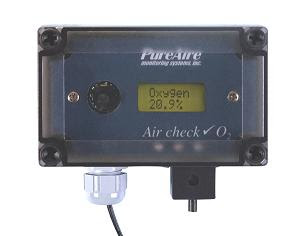
An explosion at a
university research lab in Hawaii last year highlights the dangers of working
with compressed gas and the need for safety equipment on campus. Learn the
dangers of working with compressed gas, how an oxygen deficiency monitor can
help, and campus safety best practices.
Compressed
Gas on Campus: Uses and Dangers
Compressed gases
including nitrogen, argon, and oxygen are widely used on campuses. These gases
have many practical and educational uses across educational
institutions. While the level of risk varies across schools, a few
examples will illustrate the benefits and the risks of using compressed gas on
campus.
Argon gas is critical
in the 3D printing process, which campus design, fine arts, applied arts, and
sciences may use. Culinary programs may use liquid nitrogen for cooking and
freezing, and chemistry labs may use N2 as well. Autoclaves, which sterilize
equipment, are regularly used in scientific, medical, and industrial
programs. Sports programs and physical therapy training programs may use
cryotherapy for injury recovery. Cryotherapy chambers rely on nitrogen to chill
the air. The chambers can turn deadly if a nitrogen leak occurs. These
gases may be used by facilities personnel, researchers, faculty members
or teaching assistants and students assisting with teaching labs. No
matter which gas students are working with, they are at risk if the gas is not
handled, used, stored, or transported properly.
As these few examples
illustrate, there are many opportunities for dangerous leaks, explosions,
or fires on campus if safety protocol isn't followed. Many schools find
the gases are not properly stored, which leaves everyone on campus in danger. A
recent safety bulletin from the University of Rochester found that liquid
nitrogen was stored without an oxygen sensor, poisonous gas was used with a
fume hood that did not adequately vent hazardous fumes, gas cylinders were
modified using unacceptable materials, and gas tanks were stored without
protective chains, stands, and gas caps.
Why
Schools and Universities Need an O2 Monitor
As the incident in
the Hawaiian university lab illustrates clearly, compressed gases pose
significant health risks in the university setting. Whenever safety
protocol is not followed, the tanks are at greater risk of tipping, falling
over, or leaking.
While the lab worker
escaped with her life, many others have not been so lucky. A nitrogen (N2)
gas leak causes death via asphyxiation in a matter of minutes.
Nitrogen gas is both
odorless and colorless. If gas leaks from a canister, there is no way for
passerby to tell. As the gas leaks, it lowers ambient oxygen levels below safe
thresholds. When levels of oxygen in the air fall below 16 percent, people can
experience adverse health affects. Additionally, university property can be
damaged by fires or explosions.
All it takes it a couple of breaths of oxygen-deficient air for symptoms including confusion, dizziness, fatigue, muscular aches, lack of consciousness, and even death.
Given the clear
dangers that these gases pose, universities and schools must take steps to
protect their students and staff. Fortunately, there is an easy and cost-effective
way to detect gas leaks and alert everyone before oxygen is depleted from the
air: Installing an O2 monitor.
An O2
monitor, also called an O2 deficiency monitor, measures levels of
oxygen in the air all the time. As long as the air has adequate oxygen, the
monitor will stay silent. When levels fall below safe thresholds, the oxygen
deficiency monitor will flash lights and sound an alarm. This way, everyone in
the vicinity of the leak can escape without suffering adverse health effects.
An O2
deficiency monitor should be installed anywhere that these gases are used or
stored. Universities and schools may wish to equip labs, storage facilities,
equipment rooms, and hallways or corridors that connect storage rooms with labs
or classrooms where the gas is used.
PureAire offers
robust oxygen deficiency monitors that feature best in class construction. Made
with zirconium oxide sensors, these monitors offer 10 or more years of
maintenance-free performance once installed. These monitors can detect leaks of
gases including argon, nitrogen, and helium. View PureAire's line of oxygen
deficiency monitors at www.pureairemonitoring.com.
